Your Essential Guide to Starting a Successful Mortgage Broking Business

Starting a mortgage broking business can be a rewarding career choice, but it requires a solid plan, essential industry knowledge, and the right support.
Whether you’re interested in helping people achieve homeownership, building a flexible career, or tapping into Australia’s property market, here’s a step-by-step guide to help you get started.
Step 1: Understand What a Mortgage Broker Does
As a mortgage broker, your role is to guide clients through the process of finding and securing a home loan that fits their needs.
This includes assessing their financial situation, comparing loan products from various lenders, and helping them complete the application process.
A broker serves as the expert in this journey, making the home loan process smoother and more accessible.
Step 2: Complete Your Educational Requirements
To become a mortgage broker in Australia, you’ll need:
- A Certificate IV in Finance and Mortgage Broking: This entry-level course covers the basics of lending, including compliance, loan structuring, and the application process.
- A Diploma of Finance and Mortgage Broking Management: Many brokers take this additional step to broaden their qualifications, opening up more complex loan scenarios and improving their career prospects.
Completing these courses will help you gain foundational knowledge about mortgage broking and prepare you to confidently serve clients.
Step 3: Engage a Mentor Early
Engaging a mentor is one of the most important steps in starting your mortgage broking business.
Both the MFAA (Mortgage & Finance Association of Australia) and FBAA (Finance Brokers Association of Australia) require new brokers to complete a two-year mentoring program, which is essential for your professional accreditation.
- Do your homework to help you choose the right mentor,
- Choosing the right mentor for you will have the biggest effect on your business success,
- Check out their Google reviews
- Speak to their mentees, and check out their track record for success,
- Ask lots of questions!
- And ask yourself this: “Do you think you can work with them?“
Why Engage a Mentor?
- Industry Experience: A mentor provides real-world insights into client interactions, lender requirements, and compliance issues that textbooks won’t cover.
- Business Guidance: Mentors help you set up essential systems and processes, such as client relationship management (CRM) software, document handling, and submission protocols.
- Compliance and Best Practices: They guide you through complex compliance requirements, ensuring you meet regulatory standards and lender policies.
- Networking and Referrals: A mentor often has industry connections that can help you build your business faster by introducing you to real estate agents, accountants, and potential clients.
When Should You Engage a Mentor?
The ideal time to engage a mentor is before joining a professional industry body like the MFAA or FBAA or obtaining a Credit Representative status under an Australian Credit Licence (ACL).
Having a mentor first allows you to move forward in the membership and licensing process a lot quicker, ensuring you’re well-prepared and compliant, with the industry’s best practice.
Step 4: Join the MFAA or FBAA and Obtain a Credit Representative Status
With your mentor in place, you’re ready to proceed with:
- Membership with an Industry Body: Joining the MFAA or FBAA is essential. These organisations provide credibility, resources, and support, ensuring you meet high professional standards.
- Credit Representative Status: To legally operate as a mortgage broker, you’ll need an Australian Credit Licence (ACL) or become a Credit Representative under an aggregator’s licence. Most new brokers opt to become Credit Representatives, gaining the support of an aggregator, who provides essential business resources, access to lender products, and compliance guidance.
Step 5: Choose Your Business Structure
When starting a mortgage broking business, you’ll generally need a Company or Trust structure, as most aggregators require one of these structures for new brokers.
Selecting the right structure has implications for your tax position, liability, and compliance, so consider consulting an accountant or financial professional for advice.
- Company: This structure offers limited liability, tax advantages, and is preferred by aggregators for regulatory compliance and business scalability.
- Trust: A Trust structure can provide specific tax advantages, though it also requires legal setup and ongoing management.
Other business structures, such as a sole trader, are generally not accepted by aggregators and are less suited to the demands of a mortgage broking business.
Choosing the right structure from the start can streamline your path to getting accredited with lenders and an aggregator.
And may be more tax effective when you sell your business later.
Step 6: Set Up Your Office and Essential Tools
To succeed as a mortgage broker, you’ll need a professional setup with essential tools and technology:
- Home Office or Dedicated Space: If you’re working from home, create a distraction-free workspace with a professional background for client video calls.
- CRM Software: Many brokers use a CRM to manage client data, document submissions, and track each application’s progress. Your aggregator may provide access to a system. For instance, we use Mercury, which is provided by Connective.
- Financial and Loan Calculators: These tools are essential for determining a client’s borrowing capacity and comparing loan products. Most lender CRMs will have these tools included.
- Cloud Backup and Security: Use secure cloud storage to ensure client data is protected and backed up, in line with compliance requirements.
Step 7: Gain Lender Accreditations
Lender accreditations are crucial for submitting loan applications on behalf of clients.
This process varies by lender but generally involves completing forms and training to understand each lender’s products and policies.
You normally start your lender accreditation process after you have received your Credit Representative Number.
Accreditations are typically handled through your aggregator, and your mentor can guide you through this process.
Step 8: Develop Your Professional Profile and Brand
Creating a brand that reflects your professionalism and value is essential.
Consider the following:
- Professional Profile: Include your qualifications, experience, and a short bio about your approach to mortgage broking.
- Website and Social Media: A website builds credibility and makes it easier for potential clients to find you. Having a presence on social media, like LinkedIn or Facebook, can help you reach a wider audience.
- Marketing Materials: Develop business cards, brochures, and email templates that reflect your brand.
Step 9: Network and Build Relationships
Networking is a vital part of building a successful mortgage broking business. Establish connections with:
- Real Estate Agents: They are often the first to know when someone is buying a home and can refer clients to you.
- Accountants and Financial Planners: These professionals frequently work with clients who may need your services and can be great sources of referrals.
- Community Groups and Events: Attending local events or joining business groups helps you build a reputation and meet potential clients in your area.
Step 10: Create a Client Process and Focus on Compliance
Develop a structured client process to ensure every interaction is professional and compliant:
- Client Intake: Use a fact-finding form to gather essential details about your clients’ finances, goals, and needs.
- Compliance Checklists: Ensure every loan application meets responsible lending standards, including proper documentation and verification.
- Post-Settlement Support: After a loan settles, maintain regular contact to ensure your clients are satisfied and understand their mortgage obligations. Set up an After Care program in place for every one of your clients.
Step 11: Stay Updated and Continue Learning
The mortgage industry is constantly evolving, so staying informed on market changes, new products, and lender policy is essential.
Engage in ongoing professional development through lender catchups, seminars, conferences, webinars, industry publications, and courses.
Your mentor can also advise you to help stay current with any changes that affect your business.
Starting a mortgage broking business is both challenging and rewarding.
And having the right guidance early on can make all the difference.
Engaging an MFAA or FBAA mentor from the beginning is a critical step that provides you with lending insights, compliance knowledge, and practical business skills.
By following these steps and working closely with your mentor, you’ll be well-prepared to build a successful and trusted mortgage broking business.
To find out more about how our mentoring programs can help, contact us.



